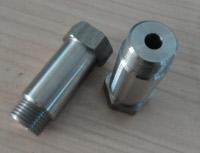Hi,
Recently my fuel has been running quite rich and there is a very strong fuel smell coming from the exhaust.
After the car has warmed up for a good five minutes, usually in the mornings I always see specks of fuel spluttering from the exhaust. I assume it's happening whilst I am driving as well. Is this normal? :?:
Do I need to get a fuel injector service done and what does this normally involve?
:?
Just now I managed to record this on video, heres the link: http://youtu.be/cmOXu4GcFMs
Has anyone else experienced this?
Thanks.
Recently my fuel has been running quite rich and there is a very strong fuel smell coming from the exhaust.
After the car has warmed up for a good five minutes, usually in the mornings I always see specks of fuel spluttering from the exhaust. I assume it's happening whilst I am driving as well. Is this normal? :?:
Do I need to get a fuel injector service done and what does this normally involve?
:?
Just now I managed to record this on video, heres the link: http://youtu.be/cmOXu4GcFMs
Has anyone else experienced this?
Thanks.


